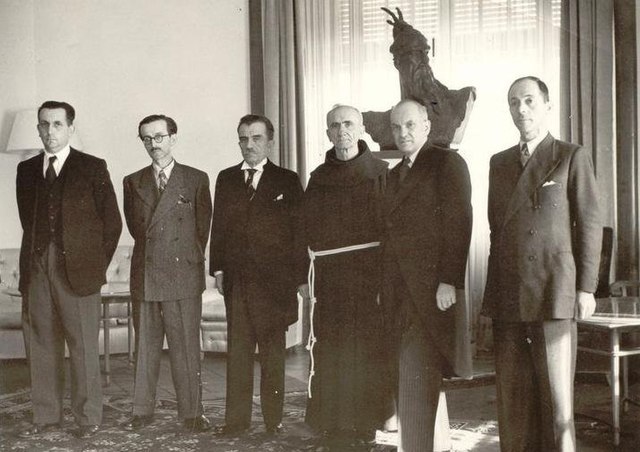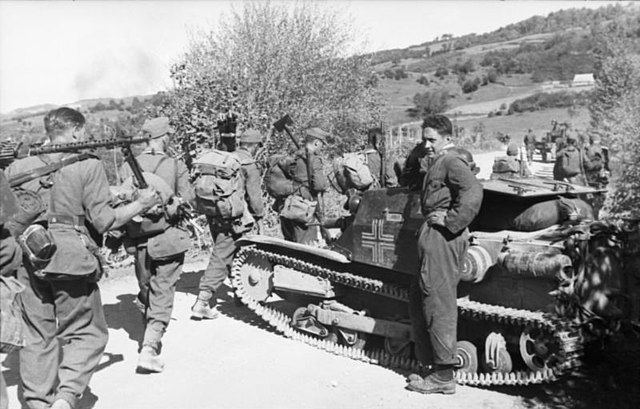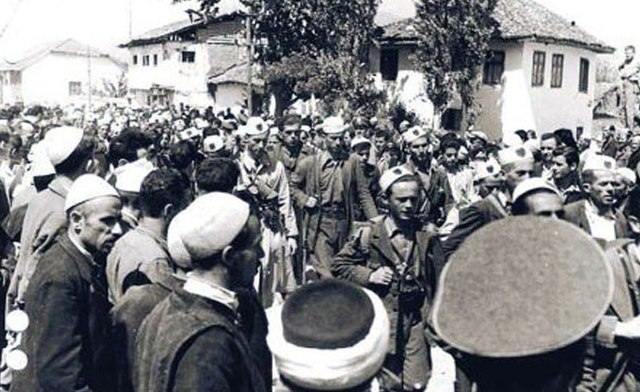German occupation of Albania
The German occupation of Albania occurred between 1943 and 1944 during World War II. Before the armistice between Italy and the Allied armed forces on 8 September 1943, Albania had been in a de jure personal union with and was de facto under the control of the Kingdom of Italy. After the armistice and the Italian exit from the Axis, German military forces entered Albania and it came under German occupation, creating the client-state, the Albanian Kingdom.
Ibrahim Biçakçiu was the Chairman of the Provisional Executive Committee from September 14 to October 24, 1943, and Prime Minister of Albania from September 6 to October 26, 1944, during the Nazi occupation.
Enver Hoxha, leader of the Albanian partisans, at Odriçan, Gjirokastra, in 1944.
Members of Regency Council – From left to right: Fuat Dibra, Mihal Zallari, Mehdi Frashëri, Father Anton Harapi, Rexhep Mitrovica and Vehbi Frashëri
German soldiers next to an Italian tank in Albania in September 1943
The Balli Kombëtar was an Albanian nationalist, collaborationist, and anti-communist resistance movement during the Second World War. It was led by Ali Këlcyra and by Midhat Frashëri. The movement was formed by members from the landowning elite, liberal nationalists opposed to communism, and other sectors of society in Albania.
Midhat Frashëri was the leader of the Balli Kombëtar.
Ballist forces enter Prizren
Convention of Ballists in Tetovo 1944 (centre left Xhem Hasa)
Ballist in Debar.








